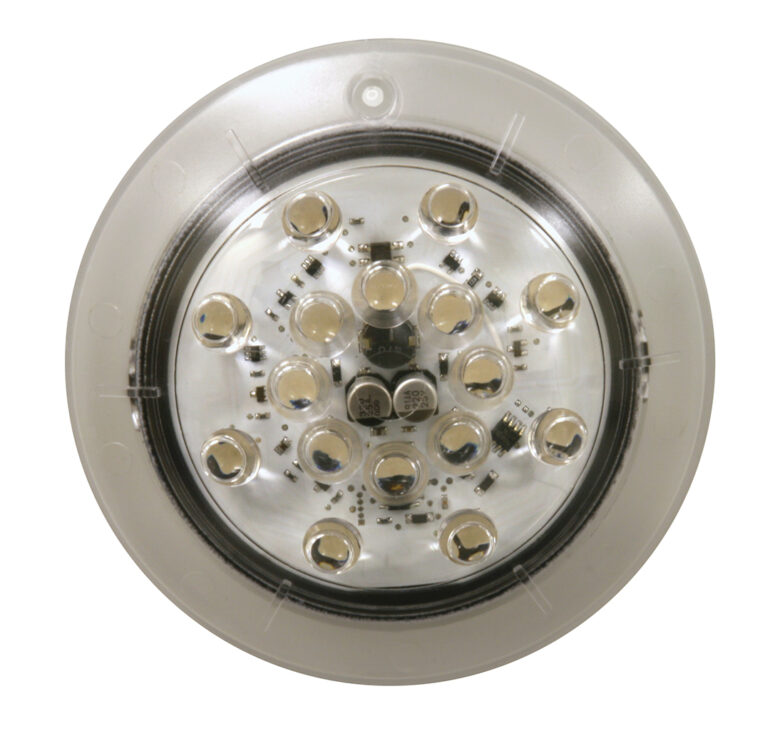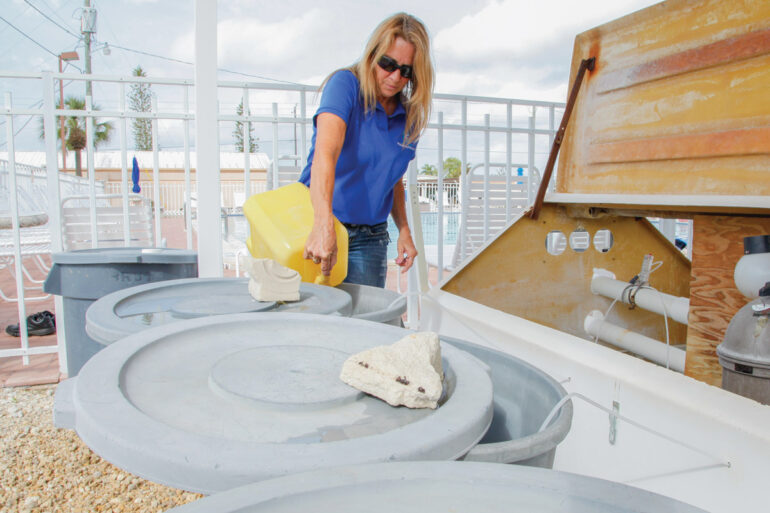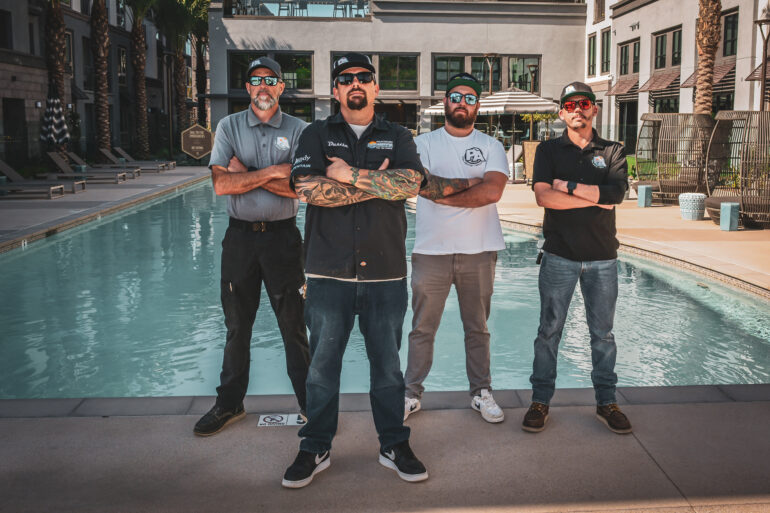Commercial Mosaic Mastery
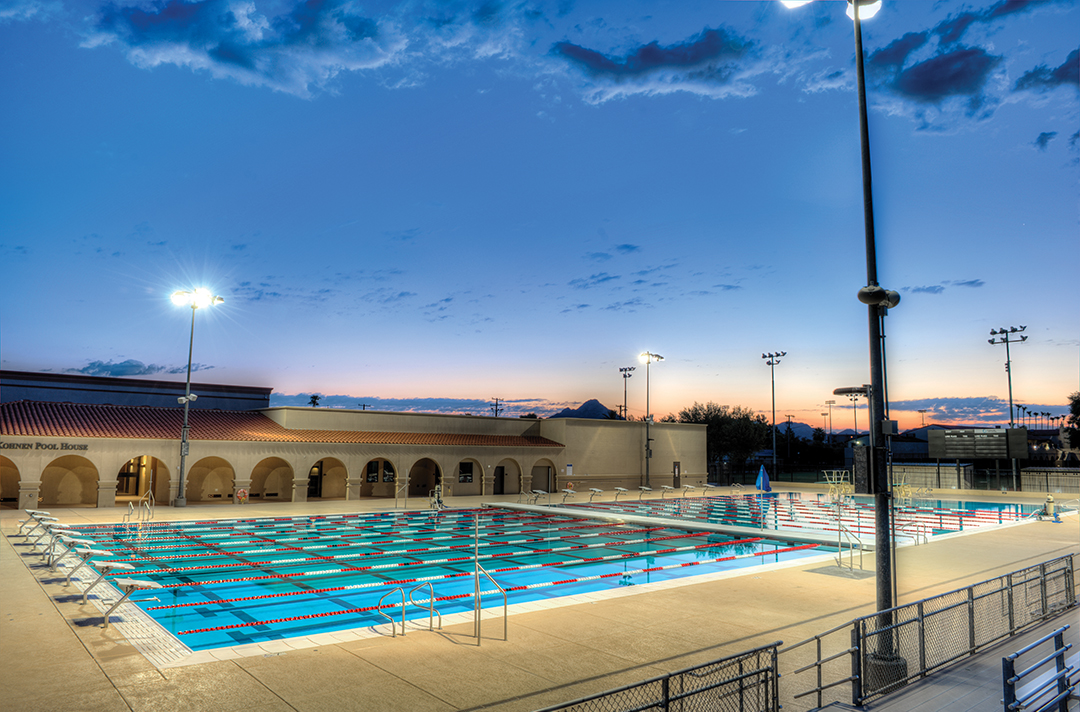
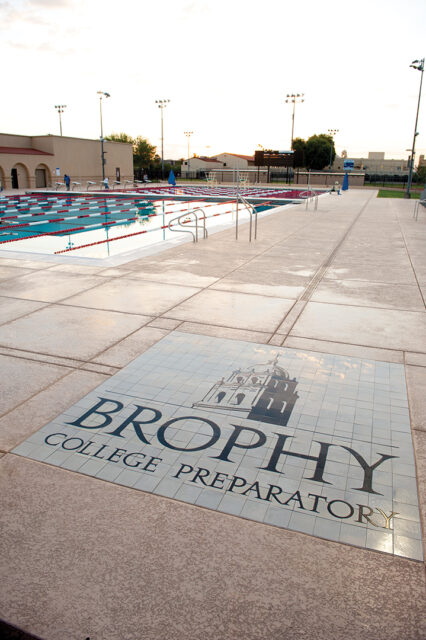
The swim team at Brophy College Preparatory, an all-boys private Jesuit high school in Phoenix with more than 1,200 students, has won 26 consecutive state titles (36 total) and one national title. But the team’s swimming pool was more than four miles away and not accessible to the rest of the students and staff.
“Brophy had a pool in the ’60s,” says Adria Renke, vice president at the school, “but it was leaking two-and-a-half inches [of water] a day and the fix would have cost more than a new pool.”
For decades, the school used facilities it purchased away from the main campus with hopes of one day having a pool on its property again. “We conceived the notion of the pool here years ago,” Renke says, “but the economy tanked and it wasn’t until two years ago that we really felt we could do it.”
They broke ground on the complex in December 2013. When the 2014 school year began in August, the $7 million Brophy Aquatic Center opened as well.
The Mosaic location
The plans for Brophy’s new swimming pool included a tile mosaic, but it took some planning to determine the best design and location. Originally the plan was to put the school’s mascot, a bronco, at the bottom of the swimming pool — but that turned out to be not conducive to competition.
“The swimmer needs to orientate himself in the water, and depending on how the meet was held, [the bronco mosaic] would disorient the lines and the swimmer,” Renke says.
Next, they considered putting it on the side of one of the buildings but decided it wouldn’t work with the school’s Spanish Moroccan architecture.
“It wasn’t going to do the mosaic or the building justice to put it on the building,” Renke says. “They clashed with each other.”
Finally, they decided the best spot was at the entrance, on the pool deck as you came through a wrought-iron gate. And instead of the mascot, the school chose a mosaic of its logo.
The making of the mosaic
Florida-based Custom Mosaics created the made-to-order design for the school’s pool deck. The nonskid mosaic ended up being a little over nine square feet, and Leslie Swab, inside sales manager at Custom Mosaics, says the company can accommodate almost any size or design.
The school sent a picture of the logo, which was then transferred onto porcelain tile through a silkscreen process. Custom Mosaics also does ceramic mosaics, which are poured into a mold, fired and then hand painted. Porcelain was a good choice for this particular mosaic because each tile was three-eighths of an inch thick and larger than the typical ceramic tiles, which meant fewer grout lines.
Once the tiles are made, Custom Mosaics glues the tile to mesh sheets. After that, installation is only a matter of following a layout map and numbering system.
“We try to make it very simple for the installer,” Swab says. “We put it all together before it leaves here, and I have a picture of it completely put together. We take stickers and we go A to A, B to B, so you know where to line everything up.”
Swab even highlights and labels which sheets are in which box. This makes it easy to replace any tiles that are damaged during installation as well.
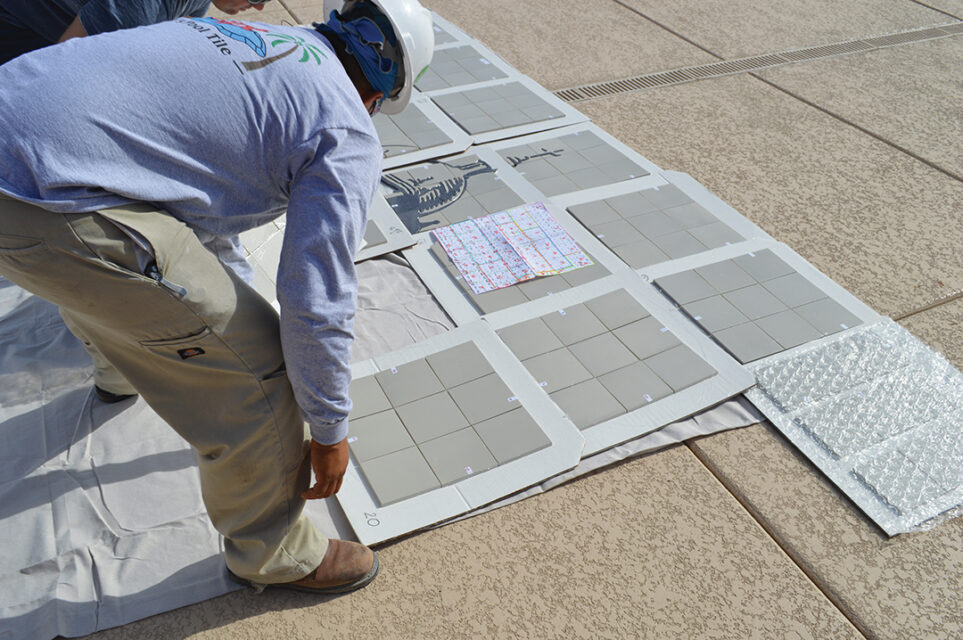
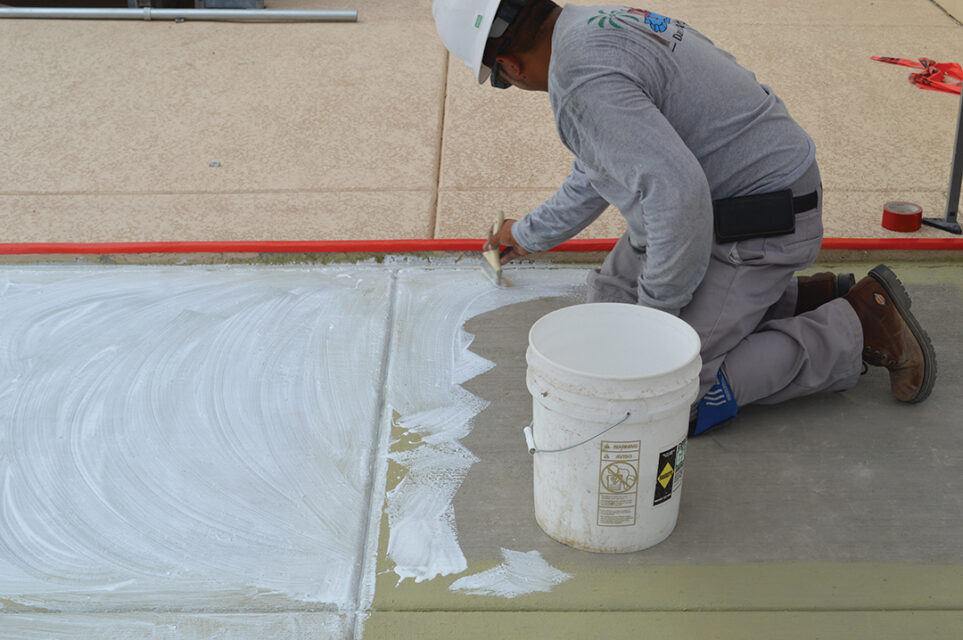
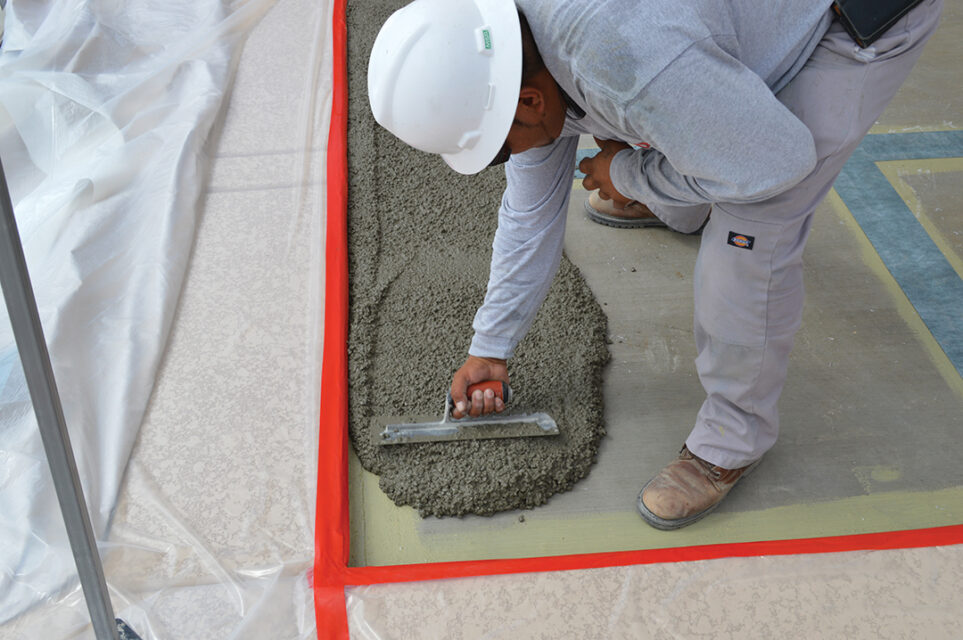
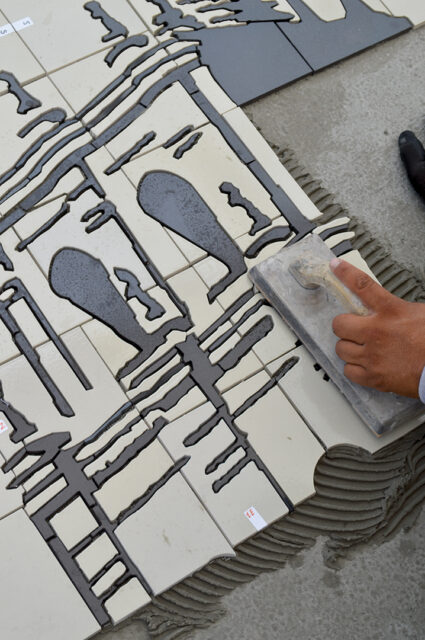
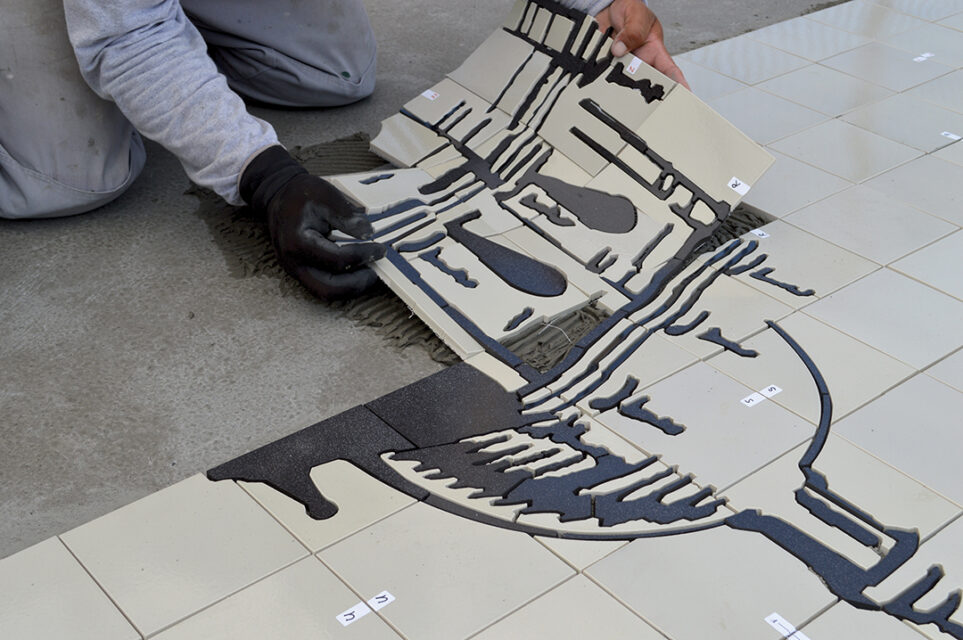
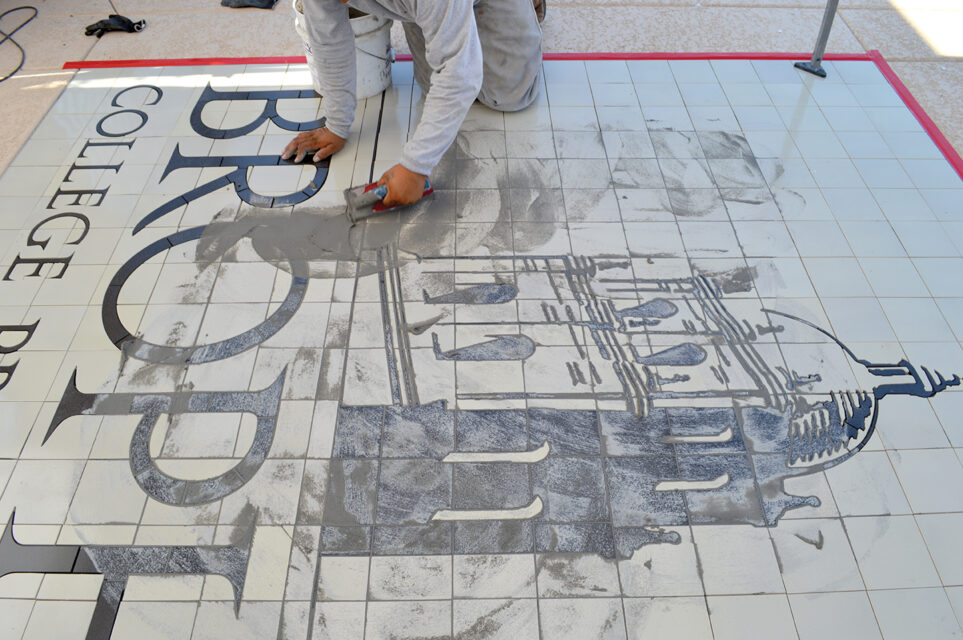
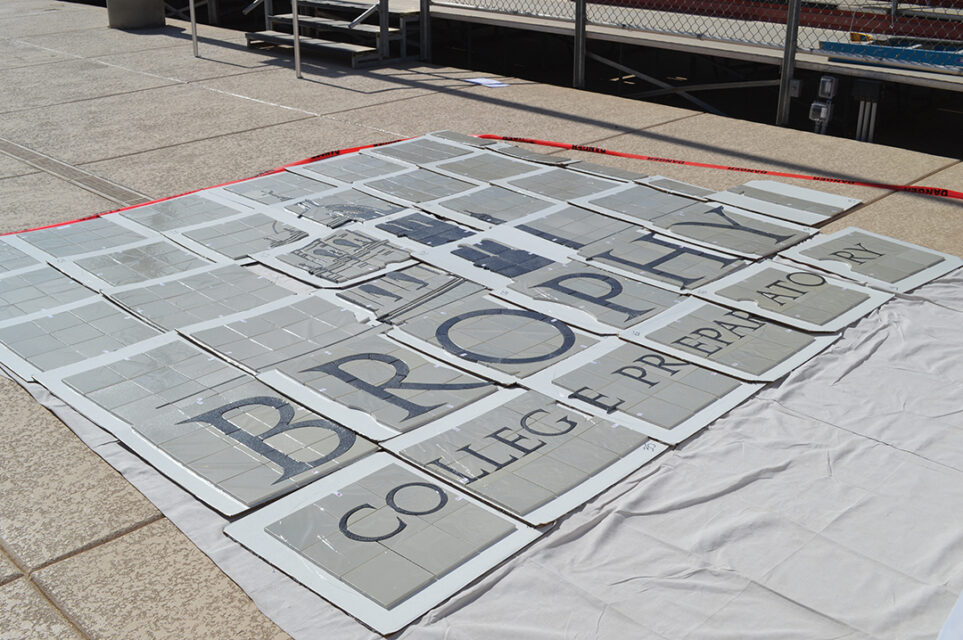
The mosaic tiles were meshed together and mapped out for easy installation. According to Conrad, who oversaw the work, the most difficult and time-consuming part of the install was adding concrete so the tiles would be flush with the deck.
The installation
Some things about Brophy mosaic’s installation were simple — it’s square, for one — while others were difficult (it’s a lot of the same tan color). Fortunately with the meshing and labeling that Custom Mosaics does, the color wasn’t an issue. The biggest challenge according to Matt Conrad, who supervised the installation for Dave’s Pool Tile, was the preparation needed before they could even begin laying the mosaic.
The tile was three-eighths of an inch thick and they were fitting it into a two-inch slot. “We had to treat the concrete and then raise the concrete to get it flush with the deck,” Conrad says. “That took us two days to do that. The easy part was setting the mosaic.”
To help prevent cracking at the expansion joints on the pool deck, they treated the concrete with Hydro Ban bonder by Laticrete, then treated it again with an elastomeric antifracture membrane and covered it all with mesh. After it had dried, they put down more concrete to bring it to the right level.
The finished product
The Brophy Aquatic Center has an 808,000-gallon, Olympic-size swimming pool. The Kohnen Pool House has two locker rooms, a classroom, teacher/coach office and storage rooms.
Renke says the pool will be used throughout the school day. They plan to let other schools that don’t have their own swimming pool use it as well. The school’s physical education classes will revolve around the pool; incoming freshmen are all given a swim test. They plan to have the pool open during the lunch break and available for teachers to use recreationally as well.
“The staff, administration, all the faculty — everybody is wanting a swim time,” Renke says. “Let me put it this way: It’s a good thing you can’t wear water out.”


